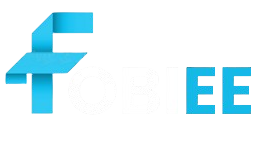The world of cryptocurrency is rapidly evolving, and investors face various risks. One of those risks centres on the potential for a so-called “rug pull” to occur. For anyone looking to invest safely in the crypto landscape, it’s critical to understand what a rug pull is, how one might perform it, and—most importantly—how to avoid being a victim of one.
What is a rug pull?
In the cryptocurrency world, a “rug pull” refers to a scam where project developers embezzle the funds invested by the project backers. This commonly happens with decentralized finance (DeFi) projects or new cryptocurrencies that promise high returns. The term originates from the act of unexpectedly withdrawing support or funds.
Crypto Rug Pull: Meaning and Mechanism
The process of pulling a rug typically involves several sequential steps:
- Token Creation: Developers develop and heavily advertise a new cryptocurrency or token, often with exaggerated and outlandish return claims that may not be realistic or feasible.
- Hype Building: The project generates marketing hype, potentially through the use of social media or influencer endorsements. There’s engagement with a burgeoning community of would-be investors.
- Liquidity Pool Construction: Developers often provide liquidity for the token on decentralized exchanges (DEXs), allowing would-be investors to trade it.
- Fund Withdrawal: At some point, the developers stop being ‘developers’ and start being thieves, withdrawing the liquidity they’ve provided and causing the token’s value to collapse.
Key Factors Impacting Rug Pulls
Multiple risk factors contribute to rug pulls, including:
- Regulatory Absence: The largely unregulated cryptocurrency market is a high-risk environment where dishonest players can operate without much concern for detection.
- Anonymous Project Teams: Investors are unable to identify or verify the teams behind a concerning number of cryptocurrency projects.
- Speculative Individual Investors: Many individuals should avoid investing in cryptocurrencies due to the unbalanced mix of significant risks and substantial rewards.
How to Avoid a Rug Pull
Although it’s impossible to eliminate the risk of rug pulls completely, there are many strategies investors can use to shield themselves.
- Do some digging: Make sure the project you’re investing in has a whitepaper, a legitimate team, and some verifiable antecedents. Projects that are honest and transparent should have no problem with you requesting a clear, detailed roadmap.
- Look for audits: See if the project has had any smart contracts audited by reputable firms. An audit can sometimes spot problems, including vulnerabilities that hackers could exploit.
- Check out community engagement: Projects with a strong, active community are usually worth checking out. You can always talk to the community on Discord or Telegram.
- Be wary of investment vehicles that offer high returns: If the offer appears excessively favourable, it likely is.
- Use exchanges with a reputation for reliability: Where you buy your investment can be as significant as what you’re buying.
- Don’t put all your eggs in one basket: Projects fail, but doing so doesn’t mean all of them were scams.
Trade-offs and challenges
Involving oneself in cryptocurrency investments necessitates carefully calibrating potential incentives and risks. Although there can be beneficial reasons to invest in these digital assets, their inherent volatility means that one’s investment can just as quickly lose value and even become worthless. Unlike tradable stock shares in a corporation, cryptocurrencies typically have no underlying asset or structure to support their value should the speculative market collapse. The two-portfolios-in-one investment strategy, with its high risk and high reward, contrasts with a scenario that could cause financial turmoil if things go awry.
Conclusion
It is essential for anyone who knows anything about cryptocurrency to understand what a rug pull is and how to avoid it. If you know friends or family who invest in cryptocurrency, share this information with them—it could save them some money. Despite the apparent amateurish execution of these projects, there are enough indicators to identify a potentially fraudulent project with due diligence. Here are a few of those signs.

